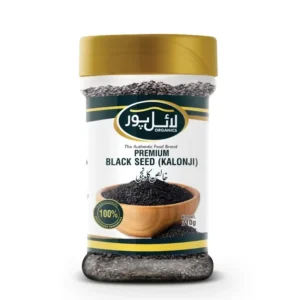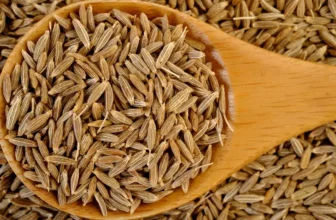The History and Origin of Red Chili: A Comprehensive Journey
Red chili pepper, a spice that brings heat, is a favorite ingredient in many cuisines worldwide. This little red fruit, chili or just red pepper, has a long and interesting history that goes back centuries.
It’s more than just a spice; it’s a cultural icon that has impacted how people eat, live, and trade. In this article, we will dig into the story of the red chili pepper, exploring where it came from, how it changed over time, and how it found its way into kitchens worldwide.
Ancient Roots and Early Domestication
The beginnings of red chili can be traced back to the Americas, where it is believed to have been first cultivated over 6,000 years ago. Archaeological evidence suggests that ancient civilizations such as the Incas and Aztecs were among the first to domesticate this native plant. These early societies used red chili not only as a culinary ingredient but also for its medicinal uses.

The domestication process involved selecting and breeding plants with desirable traits, leading to diverse varieties that differed in heat level and flavor. This genetic variety allowed red chili to thrive in various climatic conditions, contributing to its widespread adoption.
Spread Through Trade and Exploration
The journey of the red chili pepper really took off during the time of Christopher Columbus and the big trade exchange between Europe and the Americas. European explorers found these spicy peppers in the New World and saw how special they were. They brought them back to Europe, and soon red chili peppers became a key ingredient in Spanish, Portuguese, and other European cooking.
Europe wasn’t the end of the line for these peppers. They continued their travels to Asia, Africa, and the Middle East, following the well-worn paths of trade. The Portuguese were big players in this, bringing red chili peppers to places like India and Southeast Asia, where they quickly became a beloved part of the local food.
Table of Contents
Culinary Applications
- Indian Cuisine: A staple in curries, masalas, and various lentil dishes.
- Mexican Cuisine: Essential for salsas, enchilada sauce, and traditional moles.
- Thai Cuisine: Used in curries, stir-fries, and dipping sauces.
- Chinese Cuisine: Adds heat and flavor to Sichuan dishes and chili oils.
- African Cuisine: Incorporated into stews, marinades, and spice blends.

Botanical Classification and Genetic Studies
Red chili, scientifically classified as Capsicum, belongs to the Solanaceae family, which includes other common vegetables like tomatoes, potatoes, and eggplants. Within the Capsicum genus is a diverse range of species and cultivars, each with unique characteristics in terms of heat level, flavor profile, and nutritional content.
Recent advancements in genetic research have allowed scientists to delve deeper into the genomic diversity of red chili, identifying the specific genes responsible for these variations. This knowledge has proven invaluable for agricultural applications.
It has enabled the development of new red chili strains more resilient to pests, diseases, and environmental stresses. Furthermore, genetic studies have paved the way for creating chili varieties with enhanced yield, improved quality, and tailored flavor profiles, catering to the diverse culinary preferences worldwide.
Cultural and Economic Impact
Red chili peppers aren’t just about adding flavor to food. They’ve also played a big part in the world of trade. Countries like India, China, and Mexico grow a lot of chili peppers and sell them to other countries, which helps their local economies and giving jobs to many farmers.
Beyond economics, these peppers have special meaning in different cultures. In many places, they represent strength, protection, and good health. Red chili peppers even appear in festivals and rituals, showing just how important they are to people worldwide.
Modern Cultivation and Preservation
These days, farmers use modern techniques to grow lots of high-quality chili peppers. They’re also focused on growing peppers in a way that’s good for the environment, using methods like changing up the crops they grow each year, using natural fertilizers, and finding natural ways to keep pests away.
Keeping chili peppers fresh is also important. People dry, freeze, or pickle them to ensure they stay tasty and nutritious for a long time. Storing them correctly is key to preventing them from going bad and ensuring these fiery little peppers are always on hand.
Conclusion
The story of the red chili pepper is one of adventure, discovery, and cultural exchange. From its early days in the Americas to its worldwide journey through trade and exploration, it’s greatly impacted how people cook and even local economies. Chili peppers aren’t just a tasty ingredient; they’ve also been used for their potential health benefits and have become an important part of many businesses.
As we continue to learn more about this amazing spice, red chili pepper’s future looks promising. Scientists are making new discoveries about its genes, farmers are finding ways to grow it in a way that’s good for the environment, and people are coming up with new ways to keep it fresh for longer. All of this means that future generations can enjoy chili peppers even more.
Lyallpur Organics (Pvt) Ltd., a company here in Pakistan that sells organic spices, is proud to be part of this tradition. We offer high-quality red chili peppers that meet the needs of today’s consumers. By honoring the past and embracing new ideas, Lyallpur Organics is helping to make sure that the legacy of the red chili pepper continues to thrive.
History and Origin of Red Chili
-
 Premium Black Seed – Kalonji (Khalis Kalwanji) – 100% Natural & Pure | Nutrient-Rich & Flavorful | Best Price in Pakistan₨ 277.00 – ₨ 640.00Price range: ₨ 277.00 through ₨ 640.00
Premium Black Seed – Kalonji (Khalis Kalwanji) – 100% Natural & Pure | Nutrient-Rich & Flavorful | Best Price in Pakistan₨ 277.00 – ₨ 640.00Price range: ₨ 277.00 through ₨ 640.00 -
 Premium Fennel Seeds (Saunf) – 100% Natural Organic & Pure | Rich in Flavor & Aroma | Best Price in Pakistan₨ 233.00 – ₨ 490.00Price range: ₨ 233.00 through ₨ 490.00
Premium Fennel Seeds (Saunf) – 100% Natural Organic & Pure | Rich in Flavor & Aroma | Best Price in Pakistan₨ 233.00 – ₨ 490.00Price range: ₨ 233.00 through ₨ 490.00 -
 Premium Crushed Red Chili (Crushed Lal Mirch, Darra Mirch) – 100% Natural & Pure | Super Spicy Flavour & Vibrant Color | Best Price in Pakistan₨ 219.00 – ₨ 780.00Price range: ₨ 219.00 through ₨ 780.00★★★★★
Premium Crushed Red Chili (Crushed Lal Mirch, Darra Mirch) – 100% Natural & Pure | Super Spicy Flavour & Vibrant Color | Best Price in Pakistan₨ 219.00 – ₨ 780.00Price range: ₨ 219.00 through ₨ 780.00★★★★★ -
 Premium Black Cumin (Kala Zeera) – 100% Natural Organic & Pure | Intense Flavour & Rich Aroma | Best Price in Pakistan₨ 373.00 – ₨ 860.00Price range: ₨ 373.00 through ₨ 860.00★★★★★
Premium Black Cumin (Kala Zeera) – 100% Natural Organic & Pure | Intense Flavour & Rich Aroma | Best Price in Pakistan₨ 373.00 – ₨ 860.00Price range: ₨ 373.00 through ₨ 860.00★★★★★ -
 Premium Kishmish (Raisin) Sundarkhani – 100% Natural Organic & Pure | Rich in Nutrients & Sweet Flavour | Best Price in Pakistan₨ 281.00 – ₨ 410.00Price range: ₨ 281.00 through ₨ 410.00
Premium Kishmish (Raisin) Sundarkhani – 100% Natural Organic & Pure | Rich in Nutrients & Sweet Flavour | Best Price in Pakistan₨ 281.00 – ₨ 410.00Price range: ₨ 281.00 through ₨ 410.00 -
 Premium Garam Masala Powder – 100% Natural & Pure | Perfect Spice Blend | Best Price in Pakistan₨ 447.00 – ₨ 1,106.00Price range: ₨ 447.00 through ₨ 1,106.00
Premium Garam Masala Powder – 100% Natural & Pure | Perfect Spice Blend | Best Price in Pakistan₨ 447.00 – ₨ 1,106.00Price range: ₨ 447.00 through ₨ 1,106.00







